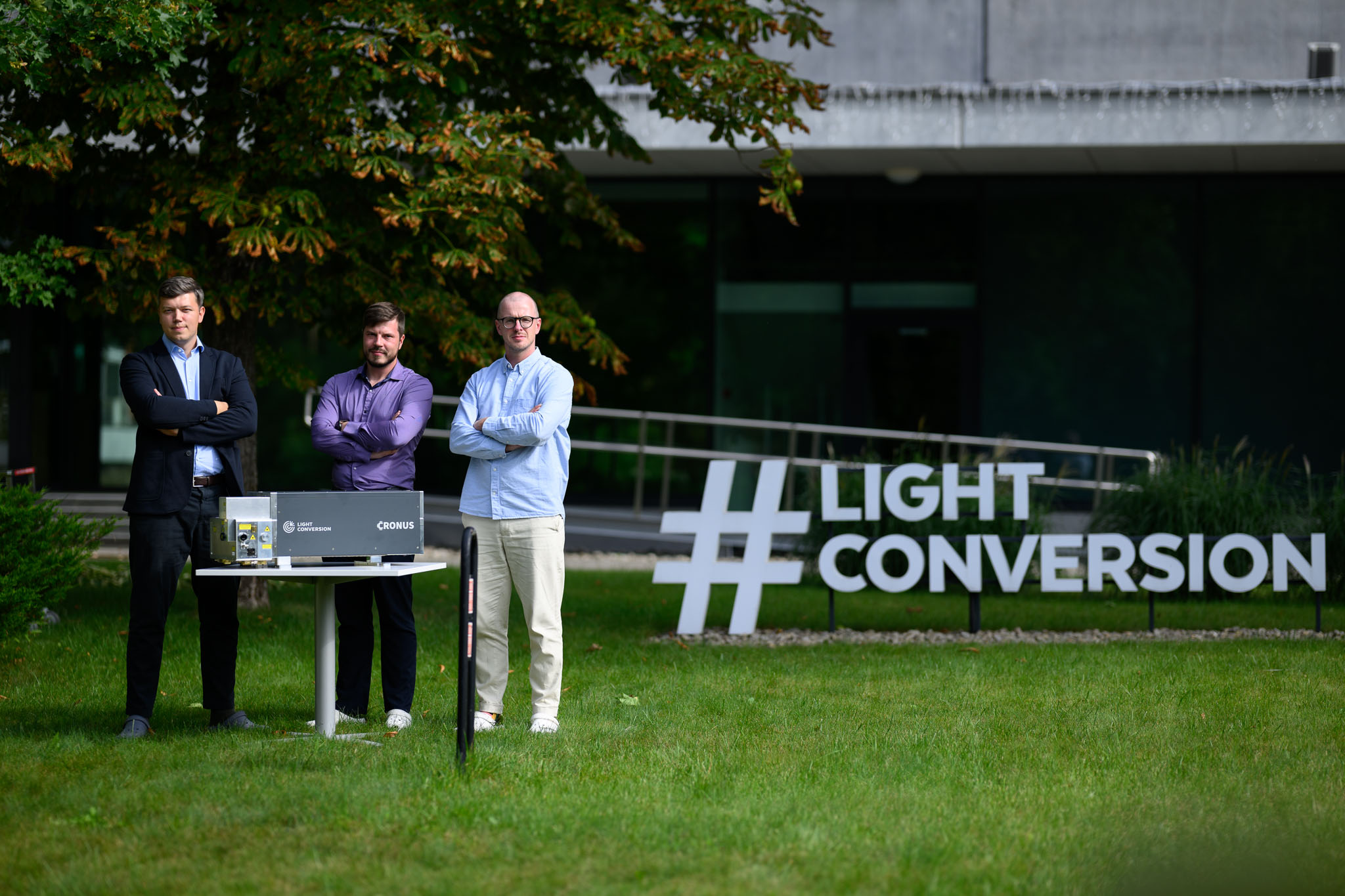CRONUS-3P Stands Out as the Laser Focus World Honoree
The CRONUS-3P laser source has been recognized as the Silver Honoree by the Laser Focus World Innovator’s Awards. The honorees were chosen by a distinguished panel of judges from the optics and photonics community.
The new fully-integrated version of CRONUS-3P represents a next-generation turn-key solution for multiphoton microscopy that is even more compact, more reliable, and more versatile. It offers tunable femtosecond output with integrated group delay dispersion (GDD) control to ensure optimal pulse duration at the sample. Its industrial-grade design guarantees high pulse-to-pulse energy and long-term power stability [1].
According to Mantvydas Mikulis, the product manager of CRONUS lasers, CRONUS-3P boasts several unique features that are often on customer wishlists:
- Wavelength tunability to access both 1300 nm and 1700 nm biological transparency windows
- Integrated dispersion compensation for optimal pulse duration at the sample
- Integrated beam steering and beam size control
- Market-leading output stability and beam quality
- Simple integration and user-friendly automated control
Dr. Lukas Kontenis, an R&D engineer working on microscopy applications, noted: “Multiphoton microscopy, especially three-photon and widefield imaging, is complicated enough as is. There is therefore a need for reliable femtosecond excitation sources that are easy to set up and run for multiple-day imaging sessions. CRONUS-3P aims to be just that, with wavelength and GDD tuning, beam steering, and pulse gating. The software behind the laser also makes it easy to automate, sweep parameters, and test imaging ideas.”
Furthermore, CRONUS-3P capabilities extend beyond imaging, as demonstrated by Danielius Samsonas, who not only led the mechanical engineering team during the design and build phase of the laser but also utilized it experimentally in multiphoton polymerization [2, 3].
The development of the CRONUS-3P laser source was supported by the FAIR CHARM project, funded by the European Union.
The project aims to provide complementary imaging solutions that transform the ability to capture, in real time, biological processes as well as the cellular and extracellular structures involved in disease onset and progression.
Project partners: University of Geneva, KU Leuven, Max Planck Institute for Multidisciplinary Sciences, Szeged Biological Research Centre, LaVision BioTec GmbH, University of Lübeck, INRAE, Medical Laser Center Lübeck, and ONIRIS.
References:
[1] L. Kontenis, et al., SPIE Proc., Multiphoton Microscopy in the Biomedical Sciences XXIII (2023).
[2] D. Samsonas, et al., Nanophotonics 12 (8) (2023).
[3] E. Skliutas, et al., Virtual and Physical Prototyping 1 (18) (2023).

